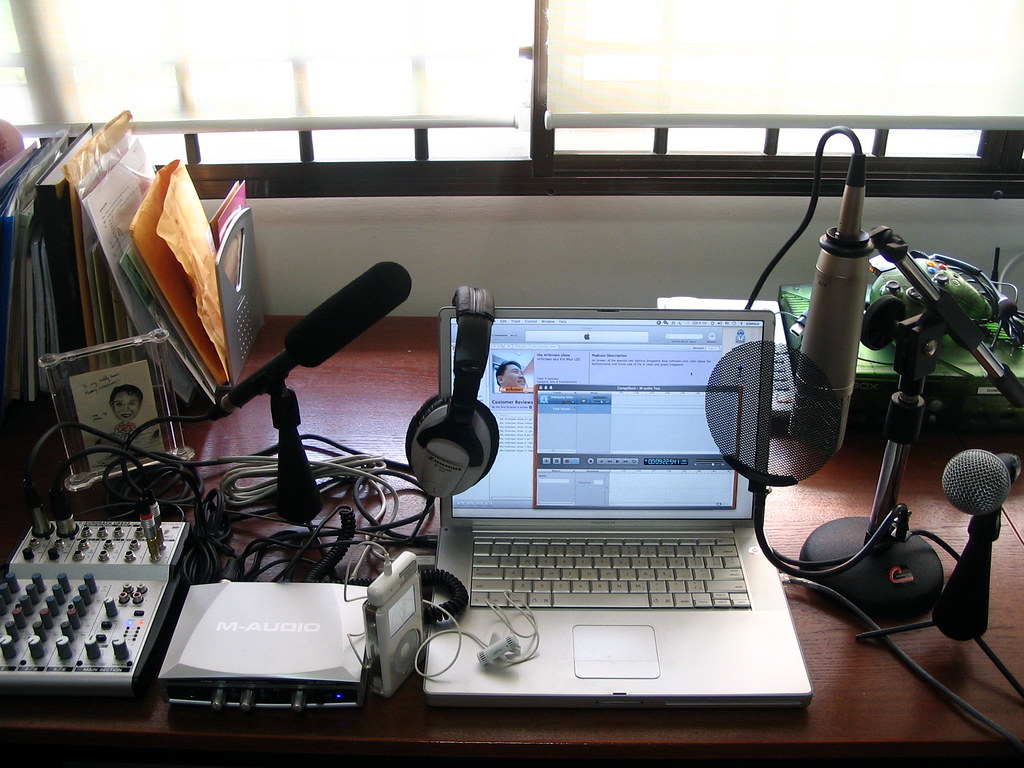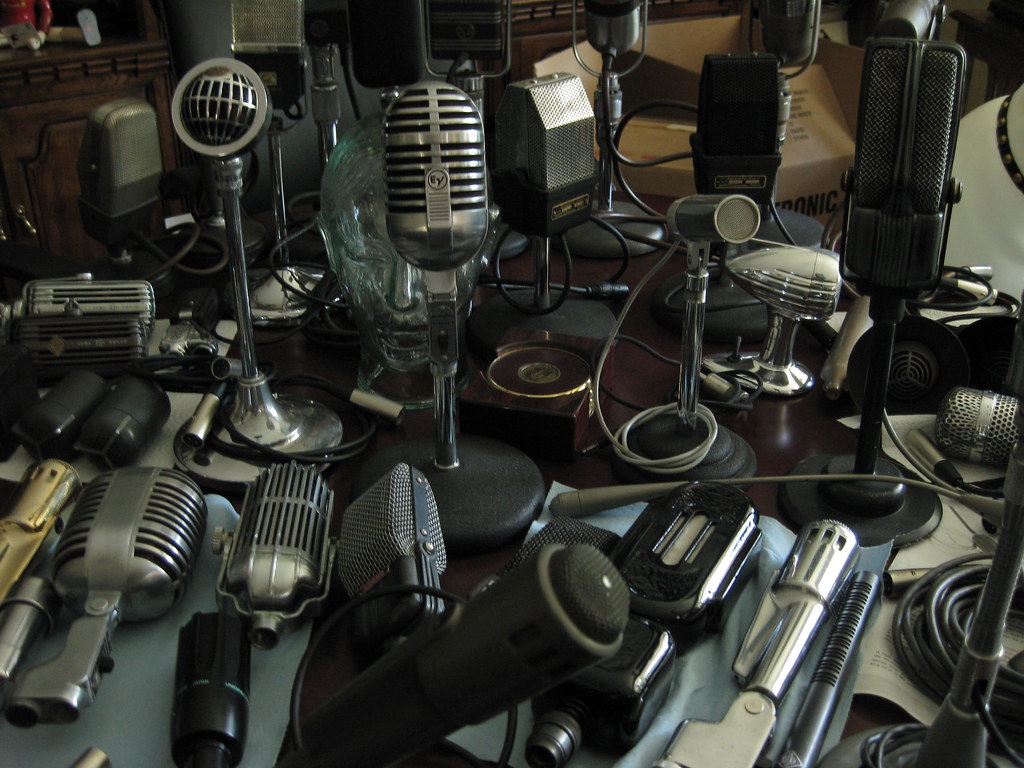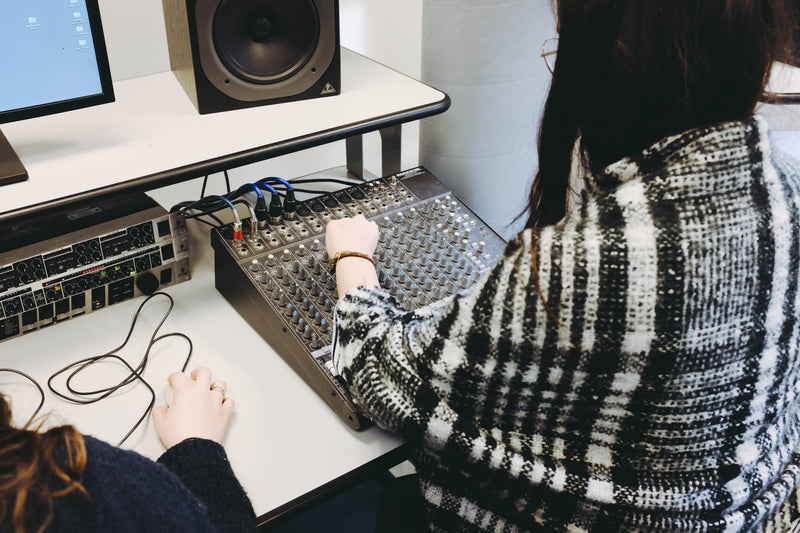Welcome to the world of podcasting, where creating engaging and high-quality content is essential for building a loyal audience. As a podcaster, you know that the right equipment can make all the difference in producing killer content that stands out from the rest. But with so many options out there, how do you know which equipment is worth investing in? In this blog post, we’ll be exploring some of the top podcasting equipment on the market to help you take your content to the next level. Get ready to step up your podcast game!

Why Podcasting Equipment is Crucial for Quality Content Creation
Podcasting equipment is an essential aspect of creating high-quality content. Without the right tools, your podcast may suffer from poor sound quality, which can turn off listeners. Investing in good equipment can make a significant difference in the overall production value of your podcast. Additionally, having the right podcasting equipment can make the recording and editing process much smoother and efficient. With so many options available, it can be overwhelming to choose the right equipment for your needs. However, taking the time to research and invest in quality equipment will pay off in the long run by helping you produce professional-grade content that keeps your audience engaged.

Top Picks for High-Quality Microphones in Podcasting
When it comes to podcasting, having a high-quality microphone is essential for producing clear and professional-sounding content. Condenser microphones are a popular choice among podcasters due to their sensitivity and ability to capture a wide range of frequencies. The Shure SM7B is a top pick for many podcasters, known for its warm and natural sound. Another great option is the Audio-Technica AT4053B, which offers excellent clarity and low self-noise.
Dynamic microphones are also a viable option, especially if you’re recording in a noisy environment. The Electro-Voice RE20 is a popular dynamic microphone that provides excellent noise rejection and smooth sound quality. For those on a budget, the Samson Q2U is an affordable dynamic microphone that offers both USB and XLR connectivity.
Ultimately, the best microphone for your podcast will depend on your specific needs and preferences. Consider factors such as your recording environment, budget, and desired sound quality when selecting the perfect microphone for your podcasting setup.
Selecting the Best Audio Interface to Enhance Your Podcast Production
Audio interface is an indispensable piece of podcasting equipment, especially if you want to take your production quality to the next level. It serves as a bridge between your computer or laptop and other audio devices, such as microphones, instruments, or mixers. When choosing the right audio interface for podcasting, factors like sound quality, connectivity options, and budget come into play.
The Focusrite Scarlett 2i2 is a popular choice among podcasters due to its high-quality preamps that offer exceptional clarity and warmth in vocals and musical instruments. Its two XLR inputs allow you to record multiple sources at once without losing signal strength or tone.
For those on a tight budget but still looking for good performance, consider the PreSonus AudioBox USB 96. This affordable yet reliable audio interface offers up to two microphone inputs with phantom power support plus MIDI input/output functionality.
Top-end interfaces like the Universal Audio Apollo Twin MKII Duo provide more advanced features like near-zero latency processing and digital signal processing plugins that can add professional studio effects during recording or mixing phases.

Essential Software and Apps for Streamlining Your Podcast Workflow
Recording and Editing Software: The Backbone of Your Podcast Workflow
When it comes to creating a high-quality podcast, recording and editing software are crucial components of your workflow. A good recording and editing software can make all the difference in producing content that sounds professional and polished. There are many options available, from free programs like Audacity to more advanced software such as Adobe Audition or Pro Tools. Look for features like noise reduction, EQ control, and multi-track recording to ensure you have full control over your audio quality. With the right software, you can streamline your process and stay organized while creating killer content.
Organizing Your Episodes: Essential Apps for Managing Your Podcast
One of the most important aspects of running a successful podcast is keeping your episodes organized. With so many elements to manage, having efficient podcast management software can make all the difference in streamlining your workflow. One popular choice among podcasters is Trello – an app that allows you to create boards and lists for each episode, assign tasks to team members, and keep track of deadlines. Another useful option is Evernote – a note-taking app with audio recording capabilities that lets you store all your research and ideas in one place. By using these essential apps for managing your podcast workflow, you’ll be able to produce high-quality content more efficiently than ever before!
Streamlining Your Workflow: Tools to Make Podcasting a Breeze
Whether you’re a beginner or an experienced podcaster, utilizing the right software and apps can significantly streamline your workflow. Editing software is crucial for post-production tasks like trimming, cleaning up audio quality issues, adding music and sound effects to enhance the listener’s experience. Audacity is a free editing tool that offers all these features with a user-friendly interface. Remote recording apps like Zencastr or Squadcast come in handy when working with guests who are not physically present. These tools allow you to capture high-quality audio from remote locations while minimizing background noise and time spent on post-recording editing. With the right software and apps at your disposal, podcasting will be nothing short of effortless.
Collaboration Made Easy: Apps for Remote Podcast Recording and Editing
Remote podcast recording and editing has become increasingly popular in recent times, especially with the rise of remote work. With the right software and apps, collaborating with co-hosts, guests, and editors from different locations has never been easier. Some popular options include Zencastr, Squadcast, and Riverside.fm. These apps allow you to record high-quality audio from multiple sources simultaneously, making it easy to edit and mix later on. They also offer features like automatic post-production processing and cloud-based storage for seamless collaboration. With these tools at your disposal, you can create professional-sounding podcasts from anywhere in the world.

Headphones vs Monitors: Which is Better for Editing and Mixing your Podcast?
When it comes to editing and mixing your podcast, headphones and monitors are the two most common options. Headphones are great for isolating sound and picking up on small details, while monitors provide a more accurate representation of the overall sound.
When using headphones, it’s important to choose a pair that is comfortable for extended use and has a flat frequency response. This will ensure that you’re not missing any important details or overcompensating for certain frequencies. On the other hand, monitors should be placed in an acoustically treated room to avoid any unwanted reflections or resonances.
Ultimately, the choice between headphones and monitors comes down to personal preference and the specific needs of your podcast. Some podcasters prefer to use both during different stages of production. Regardless of which option you choose, investing in high-quality headphones or monitors can greatly improve the overall sound quality of your podcast.

Must-Have Accessories to Take Your Professionalism to the Next Level
Pop filter and Shock mount are two essential accessories for taking your podcasting game to the next level. A pop filter helps reduce popping sounds when speaking into a microphone, resulting in clearer audio quality. It is especially useful for podcasts that involve singing or voice acting.
A shock mount is another important accessory that suspends the microphone from its stand, isolating it from vibrations caused by external factors such as footsteps or desk bumps. This helps eliminate unwanted noise interference and results in better sound quality overall.
Other noteworthy podcast accessories include boom arms for flexible mic placement, studio headphones for accurate sound monitoring during recording, and acoustic foam panels for reducing room reverb. While these items may not be necessary at first, incorporating them into your setup can significantly improve your podcast’s professionalism and production value.
In conclusion, investing in high-quality podcasting equipment is essential for producing killer content. The right microphone can make a huge difference in the sound quality of your podcast, and pairing it with the best audio interface will further enhance production value. Additionally, using software and apps to streamline your workflow can save time and effort while editing and mixing your episodes. When it comes to monitoring your work, both headphones and monitors have their advantages – choose whichever suits you best! Finally, don’t forget about accessories that can take your professionalism to the next level, such as pop filters or shock mounts. With top-of-the-line equipment at your disposal, your podcast has boundless potential for growth and success!
Q & A
Q. Who needs podcasting equipment?
A. Anyone who wants to start a podcast needs equipment.
Q. What podcasting equipment do I need?
A. You need a microphone, headphones, and recording software.
Q. How much should I spend on podcasting equipment?
A. You can spend anywhere from $50 to $500 on equipment.
Q. What if I don’t have a quiet recording space?
A. Consider getting a microphone with noise-cancelling features.
Q. How do I make sure my audio quality is good?
A. Test your equipment and do a sound check before recording.
Q. What if I’m not tech-savvy?
A. Look for equipment with user-friendly features and tutorials.
